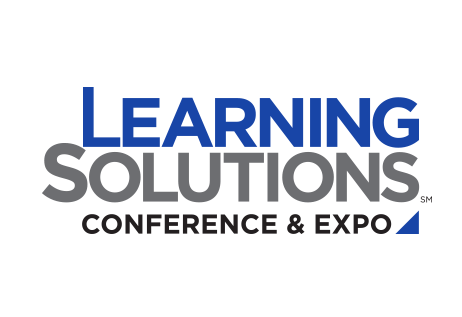Learning Solutions Concurrent Sessions
The Learning Solutions Conference & Expo offers over 100 concurrent sessions covering eLearning best practices, how-tos, case studies, and emerging trends. These sessions will help you develop new skills and knowledge, which will help you build more engaging and effective learning experiences.
Specialized Focuses
In addition to the great tracks at Learning Solutions Conference & Expo, there are a number of specialized sessions curated to help you put your skills into practice immediately.

The AlignED series of sessions focuses on what higher ed and corporate learning professionals can learn from one another. These sessions help bridge the gaps between academic and corporate education.

B.Y.O.L.® (Bring Your Own Laptop®) workshops ensure that you receive in-depth, hands-on training and enable you to follow along with the instructor step-by-step.
Filter By:
Sessions in Blended Track
LS101 Using Blended Learning Solutions to Achieve Business Revenue Goals
Concurrent Session
Too many times, training struggles to show its impact on a business; the metrics used to measure training are unrelated to the bottom line results of a firm. Training departments often have difficulty showing their impact on sales and revenue goals. Thus training is viewed as a support function or engaged only when necessary.
Read MoreFrom its inception, distance learning at Infectious Diseases Institute (IDI) has covered three priority areas: creating distance learning and blended learning courses, providing post-training support for IDI alumni, and integrating education technology tools into face-to-face courses. However, IDI has faced the significant challenge of battling an environment where prospective trainees have little-to-no access to fast, reliable Internet. To deliver full-fledged, online courses, IDI has used the open-source software Poodle.
Read MoreDesigning training without an understanding of how the brain works is a lot like trying to get somewhere without a map. Even if you eventually arrive at your destination, you won’t know how you got there so that you can do it again. Once you understand how the brain works, you can use the attention, engagement, encoding, and retrieval processes of the brain to make training that is more effective, takes less time to produce, and delivers more lasting results.
Read MoreDuring design and development SMEs, stakeholders sometimes suggest ideas or practices that are antithetical to good instructional design. For example, a designer might have a stakeholder who believes it’s best to simply film a daylong stand-up training session and deliver it as one video. In this case, like so many others, it’s helpful for the designer to identify research findings to help them understand why learning should be designed differently.
Read MoreIt’s a daunting challenge to transition from individual contributor to frontline leader; a challenge that requires new leaders to develop what can be a bewildering variety of new skills. To succeed, new leaders must practice those skills on the job, but few actually do. As a result, many leadership development programs focus on providing great training events only.
Read MoreLS901 Retail Edge: How Samsung Australia Empowered Staff and Transformed Learning
Concurrent Session
How did Samsung Australia prepare for a shift from live, in-person training and product launch services to sales teams at 24-plus wireless carriers and big box retailers across Australia and New Zealand? What is required to train more than 20,000 external retail staff on an end-to-end platform—spanning registration, content delivery, and tracking—and provide support for each carrier through a privately branded experience?
Read MoreLS1002 Implementing a Learning Program in the Face of Overwhelming Odds
Concurrent Session
A complete software system overhaul is a challenge for any organization. The Lawrence Berkeley National Laboratory completely re-engineered its 17-year-old system from the ground up, requiring training on the new systems and related processes for each of its employees. Creating a learning program, which includes 189 different processes for 4,300 employees across 21 role groups with a core team of two in less than eight months, makes for overwhelming odds against success.
Read More


























